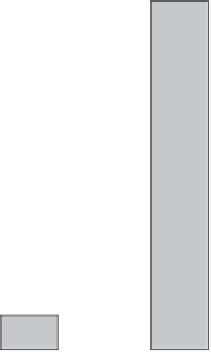Geoscience Reference
In-Depth Information
36
Ar × 296
Argon
Radiogenic
Atmospheric
36
Ar
40
Ar
Figure 4.6
Correction of the atmospheric argon contribution to mass 40. The
40
Ar/
36
Ar ratio in the
atmosphere being invariably constant and equal to 296, radiogenic
40
Ar is inferred by the
difference between total
40
Ar and 296
36
Ar.
×
of rocks in the chapter on diffusion, that this chronometer also provides a measure of post-
orogenic cooling rates and rates of exhumation of mountain ranges. Applications in other
fields find it difficult to compete with other methods, notably U-Pb on zircons.
An important and widely used variant of the standard
40
K-
40
Ar method involves irradi-
ating the sample in a nuclear reactor with fast neutrons (energy
>
1 MeV) to produce the
reaction
39
K
p. It is here not
40
K, but the
39
Ar produced in the reaction that
is measured. Accordingly, this is termed the
39
Ar-
40
Ar method, which replaces the sepa-
rate measurement of two isotopes of two different elements,
40
K and
40
Ar,withaprecise
measurement of the
40
Ar/
39
Ar ratio of two isotopes of argon. A control sample of known
age (monitor), irradiated at the same time, provides a measure of the yield of the reac-
tion and thus allows the age of the samples to be determined by cross-calibration with the
standard. This method, combined with progressive extraction of argon from the irradiated
sample, has several advantages, described in more specialized texts (e.g. McDougall and
Harrison,
1999
), including the identification of possible argon losses after the formation of
minerals.
39
Ar
+
n
⇒
+
4.2.2 Dating zircons by the uranium-lead method
This method is the Ferrari of geochronology for long geological time scales; it is
precise and resistant against disturbances occurring after closure of the system, but
difficult
to implement. In recent years,
its development has considerably benefited






